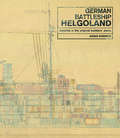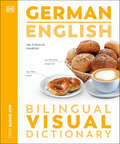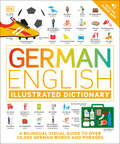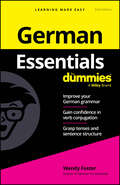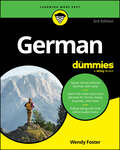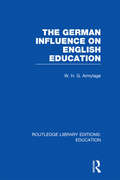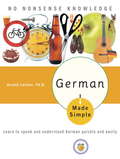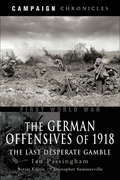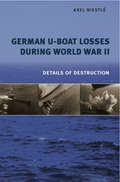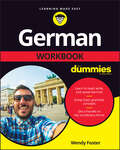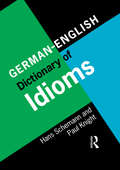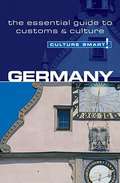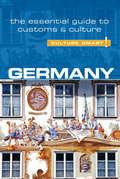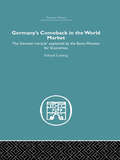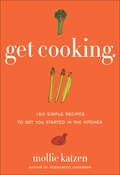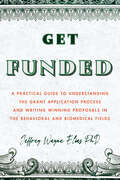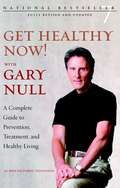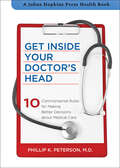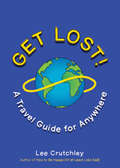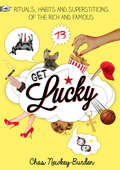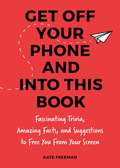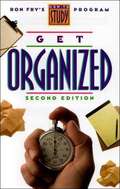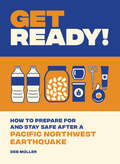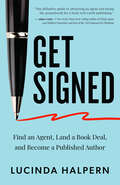- Table View
- List View
German Battleship Helgoland: As Detailed in the Original Builders' Plans
by Aidan DodsonThis volume presents complete and annotated facsimiles of the official builders&’ plans for Germany&’s WWI era dreadnaught battleship, SMS Helgoland. Launched in 1909, SMS Helgoland was the lead battleship in her class and represented a major improvement over the earlier Westfalen class. Helgoland featured 12-inch guns, matching those of her British counterparts, and served in the German Imperial Navy&’s High Seas Fleet throughout the First World War. She fought in the Battle of Jutland, was ceded to Britain as part of the peace terms and was broken up in 1924. The official builders&’ plans are now preserved by the National Maritime Museum in Greenwich, England. Using the latest scanning technology to make digital copies of the highest quality, this volume reproduces the complete set of documents in full color, with many close-ups and enlargements that make every aspect clear and comprehensible. Extensive captions point the reader to important features to be found in the plans, and an introduction covers the background to the design. The result is a supremely authoritative reference that will be a revelation to any warship enthusiast.
German English Bilingual Visual Dictionary (DK Bilingual Visual Dictionaries)
by DKWith more than 6,750 fully illustrated words and phrases in German and English, along with a free bilingual audio app, DK’s German-English Bilingual Visual Dictionary is your essential companion to life in any German-speaking country.You will learn all the words and phrases you need to buy food and clothes, talk about work and education, visit the doctor, go to the bank, use public transportation, and much more. Perfect for tourists, business travelers, and students, the dictionary is incredibly easy to follow, with thematically organized vocabulary so you can find closely related words on a particular topic. Words and phrases are illustrated with full-color photographs and artwork, helping to cement new vocabulary in your mind. A comprehensive, two-way index provides an instant reference point for new German vocabulary.The supporting audio app enables you to hear all the words and phrases spoken out loud in German. The app is easy to use and helps you learn, remember, and pronounce important vocabulary. The dictionary gives a pronunciation guide for every German word, and you can use this alongside the app to perfect your pronunciation.
German English Illustrated Dictionary: A Bilingual Visual Guide to Over 10,000 German Words and Phrases
by DKOrganized by subject and with an accompanying audio app, this is the essential reference for all German language learners.Learn more than 10,000 of the most useful words and phrases in German with this beautifully illustrated dictionary for German-language students. Building on the success of the English for Everyone course books and the Bilingual Visual Dictionary series, German/English Illustrated Dictionary uses crystal-clear illustrations to show the meaning of over 10,000 words of German vocabulary. The words are shown in a visual context in themed sections covering practical or everyday topics (such as shopping, food, or study), providing learners with all the vocabulary they need for work, travel, and leisure.Learning German vocabulary is even easier with this visually stunning dictionary.
German Essentials For Dummies
by Wendy FosterAn easy-to-follow and hands-on guide for German learners new to the language and for anyone seeking to brush up on the fundamentals German Essentials For Dummies, 2nd Edition is a quick, concise, and straightforward guide to conversational German. Perfect for anyone who wants to jumpstart their understanding of German, the book is packed with examples, definitions, and handy tips you can start using immediately. This clear guide explains key German concepts you can use to accelerate your progress in a German class, in self-instruction, or as you move through a language-learning app. Inside: Know the foundations of the German language Understand German grammar, sentence structure, pronunciation, and language conventions See German conversation examples and definitions Packed with vocabulary tips, grammar instruction, pronunciation techniques, and more, German Essentials For Dummies, 2nd Edition is a can't-miss guide for German learners, German students, and language app users looking for a learning boost.
German For Dummies
by Wendy FosterIt's easy to speak and understand German with the Dummies language method German For Dummies is a clear and easy introduction to German that speeds up the process of speaking the language. The trusted Dummies language learning method is quick and practical, so you'll know what to say and do when traveling to a German-speaking country or interacting with German speakers in your community. You'll learn the basics of German grammar and pronunciation, and then you'll explore common phrases you'll need in everyday situations. Get ready to study, work, or travel abroad—integrate German into your everyday life. This essential resource helps you make small talk, understand common expressions, navigate business settings, ask for directions, go to the doctor, and beyond Learn how German works—grammar, pronunciation, and important constructions Build your vocabulary with an updated mini-dictionary and learn common expressions you'll hear while abroad Brush up your conversation skills with authentic dialogues, plus follow along with online audio Get practice reading, writing, and speaking German, so you're ready to communicate effectively With German For Dummies, students, travelers, and business professionals can gain the confidence to converse in German.
German Influence on English Education (Routledge Library Editions: Education)
by W H ArmytageThis book traces the impact of German educationists, such as Froebel and Herbart, on practice in Britain while stressing the important and lasting influence of German scientists, technologists, philosophers, sociologists and historians on our educational system. This record of interplay between the two countries shows not only the influence of German innovations but also the effect on British education of the many German émigrés in the last two hundred years.
German Made Simple: Learn to speak and understand German quickly and easily (Made Simple)
by Arnold LeitnerLearning German Has Never Been Easier! Whether you are studying the language in school, planning a trip to Germany or Austria, or trying to learn the basics of the language closest to English, German Made Simple is the perfect book for any self-learner. Void of all nonessentials and refreshingly easy to understand, German Made Simple includes:• Basics of German grammar• Modern German vocabulary• German pronunciation guide• German reading exercises• German economic information• Common German expressions• Review exercises• Complete answer key• German-English dictionary
German Offensives of 1918: The Last Desperate Gamble (Campaign Chronicles)
by Ian PassinghamHe boldly reassesses German military doctrine, the strategic thinking behind the offensives and the effectiveness of the storm troop tactics used. He also considers how the poor state of German military morale and the privations and unrest of the German people contributed to the army's defeat.
German Order of Battle: Panzer, Panzer Grenadier, and Waffen SS Divisions in WWII (Stackpole Military History Series)
by Samuel W MitchamThe third volume in this definitive reference on the German Army in WWII, covering the organization, combat histories, and commanders of each division. Military historian Samuel Mitcham is a noted expert in Germany&’s ground forces during the Second World War. In his three-volume German Order of Battle, he presents the most detailed and authoritative reference work on the subject to date. Mitcham&’s narrative histories highlight the organization, commanders, experiences, and casualties of each division, as well as sources for further research. Taken together, these volumes are the most comprehensive and accessible reference available on the Germany Army in World War II, unmatched in the information compiled on each division from inception to destruction. Volume Three covers the Panzer, Panzer Grenadier, and Waffen SS Divisions.
German U-Boat Losses During World War II: Details of Destruction
by Axel NiestléA deep dive into the fate of German submarines lost during the Second World War. &“This has to be the best reference you can find on the subject.&”—Military Modelling No other publication on this subject comes even close to including the amount of detail provided in this book. An introduction both summarizes previous works on the subject and describes the difficulties of obtaining and verifying information from either the Germans or the Allies on U-boat losses. The main part of the book lists by hull number each U-boat&’s date of commissioning, its commanding officer, and the date and port of departure for its last patrol. It also gives the date, position, and cause of loss of each submarine, with complete details on Allied units involved in the sinking, the names and ranks of their commanding officers and pilots, and the number of crew killed or rescued. An appendix neatly summarizes data on the disposition of surviving U-boats at the end of the war and provides valuable statistical data on German U-boat losses. &“Highly recommended for every serious scholar of the Atlantic war, and every library in naval history and the history of the Second World War.&”—The Mariner&’s Mirror &“The level of detail is quite impressive and this edition is the result of 16 years of further research since the first edition . . . If you are seeking data on the fate of U-Boats then this book should be your &‘first place of call&’—no other book has such detailed data.&”—Military Archive Research
German Workbook For Dummies
by Wendy FosterSprechen sie Deutsch? Learn this fun language with Dummies German Workbook For Dummies is for German beginners who want to get started learning the official language of 7 countries. Packed with foundational grammar and integrated vocab, German Workbook For Dummies will set new language learners on their way to an exciting experience learning this complex language. Inside, you'll find plenty of practice for an experience that supports how people learn languages most effectively. As you make your way through the workbook, your confidence will grow as you discover how to handle greetings and introductions, make small talk, and understand daily encounters... auf Deutsch! Practice your speaking and writing skills in German Grasp the basics of German grammar Learn functional vocabulary and common slang Complete exercises and activities to build your confidenceWith a little help from Dummies, you'll excel in your German studies.
German/English Dictionary of Idioms: Supplement To The German/english Dictionary Of Idioms
by Hans SchemannThis unique dictionary covers all the major German idioms and is probably the richest source of contemporary German idioms available, with 33,000 headwords. Within each entry the user is provided with: English equivalents; variants; contexts and precise guidance on the degree of currency/rarity of an idiomatic expression. This dictionary is an essential reference for achieving fluency in the language. It will be invaluable for all serious learners and users of German. Not for sale in Germany, Austria and Switzerland.
Germany - Culture Smart!
by Barry TomalinCulture Smart! provides essential information on attitudes, beliefs and behavior in different countries, ensuring that you arrive at your destination aware of basic manners, common courtesies, and sensitive issues. These concise guides tell you what to expect, how to behave, and how to establish a rapport with your hosts. This inside knowledge will enable you to steer clear of embarrassing gaffes and mistakes, feel confident in unfamiliar situations, and develop trust, friendships, and successful business relationships.Culture Smart! offers illuminating insights into the culture and society of a particular country. It will help you to turn your visit-whether on business or for pleasure-into a memorable and enriching experience. Contents include* customs, values, and traditions* historical, religious, and political background* life at home* leisure, social, and cultural life* eating and drinking* do's, don'ts, and taboos* business practices* communication, spoken and unspoken"Culture Smart has come to the rescue of hapless travellers." Sunday Times Travel"... the perfect introduction to the weird, wonderful and downright odd quirks and customs of various countries." Global Travel"...full of fascinating-as well as common-sense-tips to help you avoid embarrassing faux pas." Observer"...as useful as they are entertaining." Easyjet Magazine"...offer glimpses into the psyche of a faraway world." New York Times
Germany - Culture Smart!
by Barry TomalinWith the FIFA World Cup in its pocket Germany is feeling its social, political, and economic power once again. After organizing a successful World Cup in 2006 and winning it against Argentina in Brazil in 2014, Germany sees a note of confidence, even triumphalism, permeating the country. As a European leader committed to the success of the EU and the Eurozone, Germany is a leading driver of European affairs. It emerged from the recession of 2008 as the strongest economic power in Europe, and German manufacturing, product brand value, and exports are going from strength to strength. What are the implications of this new world confidence for German society itself? In the last few years we have seen East and West Germany come together socially and achieve a greater degree of economic balance as a long-term result of German re-unification. At the same time German society itself is internationalizing, with increased immigration and the adaptation of age-old values and attitudes to a multinational, multicultural era. Traditional attitudes of formality and rigid protocol in business are softening as German business globalizes. This new, updated edition of Culture Smart! Germany examines these changes. It explains how German traditional values and working methods are adapting to take advantage of international opportunities and global society while maintaining the commitment to quality, organization, and time that marks out German business life. It shows how the traditional differences between Germany's regions are lessening, enabling society to come together and better absorb new immigrants, and above all how Germans are losing the fear and guilt associated with their twentieth-century wars and finding a new voice on the international stage.
Germany's Comeback in the World Market: the German 'Miracle' explained by the Bonn Minister for Economics
by Ludwig ErhardA great deal has been talked about the economic recovery of Western Germany since the Second World War. It is know htat this recovery was accompanied by the return of the Federal Republic to the markets of the world. Not so much is know abotu the details - about the work effected through the opitimism of the Minister for Economics, Professor Ludwig Erhard. In this book, the minister himself speaks. A detailed description is given of the stages by which first the Bizone, and then the Federal Republic, has effected the remarkable comeback which has created keen interest and concern. The book goes into the full detail which might be expected from on who is in charge of the entire machinery. The description of the way in which Government policy was employed to stimulate a free market economy is of great technical interest. Equally important is the detailed description of the way in which every nook and cranny is exploited to give the Federal Republic a foothold in foreign markets. No opportunity is neglected, from the fostering of the most ambitious long-term capital development schemes to the publication of day-to-day reports on trade openings. This book was first published in 1954.
Get Cooking: 150 Simple Recipes to Get You Started in the Kitchen
by Mollie Katzen“A fresh, contemporary entry in the 101 subgenre that is truly simple . . . the rare beginner's book that accomplishes its mission.” —Publishers Weekly, starred reviewGet Cooking is the first in a series of cookbooks geared toward beginners by Mollie Katzen, the author of the bestselling Moosewood Cookbook. Here are 125 foolproof , basic recipes for soups, homemade pasta, roast chicken, burgers, vegan specialities, chocolate chip cookies—and more—that anyone can enjoy making, no matter how inexperienced they are in the kitchen.
Get Funded: A Practical Guide to Understanding the Grant Application Process and Writing Winning Proposals in the Behavioral and Biomedical Fields
by Jeffrey Wayne EliasAn essential guide for those who wish to hone their skills in writing successful grant applications. Scientific research relies on funding, and everyone who conducts research must become adept at funding their research. This book explains how to attain the number one source of research funding: grants. Readers will learn how to prepare grant proposals, how and when to interact with funding institutions, how to interpret and respond to peer review feedback, and much more. Most importantly, they will learn how to identify and convey what makes their proposed research impactful, innovative, and achievable. Author Jeffrey Wayne Elias has an extensive career in grant funding, including 27 years in academia working on grant support and grant reviewing, plus 19 years in grant management and administration. This experience affords him a well-rounded perspective on why some applications succeed while others don&’t. Elias helps readers develop and strengthen their ability to navigate the grant application process—ultimately enabling them to achieve &“grant literacy.&”
Get Healthy Now! with Gary Null: Prevention, Treatment and Healthy Living
by Gary Null Amy McdonaldThe fully revised and updated edition to the national bestseller Get Healthy Now! includes new research and nutritional advice for treating allergies, Diabetes, PMS, Andropause, and everything in-between. From healthy skin and hair to foot and leg care, and featuring an up-to-date Alternative Practitioners Guide, Get Healthy Now! is your one-stop guide to becoming healthier from top to bottom, inside and out.Let "the new Mr. Natural" (Time Magazine) show you the best alternatives to drugs, surgical intervention, and other standard Western techniques. Drawing from methods that have been supported by thousands of years of use in other societies, as well as more recent discoveries in modern medicine, this comprehensive guide to healthy living offers a wide range of alternative approaches to help you stay healthy.
Get Inside Your Doctor's Head: 10 Commonsense Rules for Making Better Decisions about Medical Care (A Johns Hopkins Press Health Book)
by MD Phillip K. PetersonThis concise and accessible guide to modern healthcare explains the 10 rules of medical decision-making—and when to break them.With so many medical tests and treatments to consider and so much information out there—some of it contradictory—it can be difficult to know what’s right for you. In Get Inside Your Doctor’s Head, Dr. Phillip K. Peterson explains the Ten Rules of Internal Medicine. Using real case examples, Peterson shows how following these commonsense rules will help you make better decisions about your medical care.Get Inside Your Doctor’s Head provides advice about when to seek treatment, when to get another opinion, and when to let time take its course. Using the Ten Rules can help you communicate more effectively with doctors and help you weigh their recommendations. As with all rules, there are occasional exceptions—and when evidence suggests that you are an exception, the relevant rule should be broken. Follow the Ten Rules to make decisions in the increasingly complicated medical world when you need guidance about health matters for yourself and your loved ones.
Get Lost!: A Travel Guide for Anywhere
by Lee CrutchleyA wildly different adventure guide: Follow the prompts to see, feel, and learn something new wherever you go--in a new city or even your own hometownForget old-fashioned travel books with cookie-cutter advice on where to go and what to do. With this hip, ingenious and creative companion, you'll have a unique and surprising experience anywhere you go.Feeling lost? Lonely? In need of a snack? Flip to the designated page and follow the directions for an adventure, taking you off the beaten path and on a journey of discovery that's different every time.From the wandering mind and colorful sketchbook of Lee Crutchley, author of How to Be Happy (or at Least Less Sad), this delightful full-color book will give even the most jaded traveler a fresh experience--and a fun way to rediscover the joy of exploring the world around us, and even ourselves.
Get Lucky: Rituals, Habits and Superstitions of the Rich and Famous
by Chas Newkey-BurdenHave you ever wondered how Simon Cowell developed the Midas touch? Or how Mo Farah won two Olympic golds? Curious to know how Barack Obama focusses before an election? How Marilyn Monroe always looked so glamorous? Or how Dan Brown pens his latest bestseller?Packed full of entertaining trivia and hilarious anecdotes, Get Lucky chronicles the luck rituals of the great and the good. From sports stars and celebrities to writers, tastemakers and multi-millionaires, this book exposes the unusual habits and superstitions behind their success. Read on and be inspired. You never know, some of their luck might just rub off on you…
Get Off Your iPhone Now!: Fascinating Trivia, Amazing Facts, and Fun Activities to Free You From Your Screen
by Kate FreemanLearn some cool alternatives for escaping the screen! There’s more to life than looking at your smartphone. Beyond that tiny screen there’s a whole world of fun, cool, and weird things you could be doing instead! This book presents the alternative to sitting and Googling . . . actually reading a book! Here’s a list of suggestions of things that you could be doing instead of being on your phone: Learning the names of the Hawaiian islandsPerfecting the tree poseGrowing crystalsMastering the chopsticksMemorizing all the US presidentsPerfecting your poker faceCreating your own languageAnd endless other options! Whether you want to fill five minutes or an entire afternoon, this handy book is bursting with fascinating trivia, amazing facts, and suggestions to free you from your iPhone screen—from the useful to the fun to the downright bizarre. Become the most interesting person you know: put down your phone, pick up a book—this book—and learn something new!
Get Organized: Second Edition
by Ron FryGet Organized can help you accomplish more in less time. The book presents simple time-management techniques that can make a big difference in your effectiveness. By deciding what is important and what isn't...by avoiding time traps...and by getting in the habit of developing to-do lists, daily schedules, monthly calendars, and project boards, readers learn how to make the most of their study time. They'll be studying smarter, not harder.
Get Ready!: How to Prepare for and Stay Safe after a Pacific Northwest Earthquake
by Deb MollerThe definitive guide to getting ready for and staying safe after a major earthquake in the Pacific Northwest. FEMA recommends being prepared for two weeks of self-sufficiency after it occurs, and this handbook will show you how with clear, informative, and easy-to-implement steps.Recent seismic activity has made national headlines and underscored the fact that the Cascadia fault line off the coast of British Columbia, Washington, Oregon, and Northern California is overdue for a major earthquake. And when it happens, living conditions could be akin to those in the mid-nineteenth century. This handbook covers the supplies you need to stay safely in place, including water, food (and food prep), first aid, sanitation, health and hygiene needs, shelter and bedding, and light/fire. It also includes lists of what to purchase and how to store it, as well as simple excercises to gain confidence in perfoming necessary tasks. Learn what to do during and immediately after an earthquake, how to develop a reunification plan, and how to communicate when basic infrastructure is down. It also addresses the particular concerns of those living in coastal areas (the tsunami zone) as well as those outside of the severe impact zone. It covers long-term ways to stay safe without modern conveniences and a crash course in survival techniques should the quake happen before all preparations are complete. Get Ready! presents information in clear, practical, and managable steps, equipping the reader with the skills to care for themselves and their loved ones should a major earthquake hit. And when it does, the internet will not be an option, making this reference handbook invaluable. If you live in the Pacific Northwest, you need Get Ready!
Get Signed: Find an Agent, Land a Book Deal, and Become a Published Author
by Lucinda Halpern&“All aspiring authors know the value of a great literary agent, but few know how to get one. Lucinda Halpern has written the definitive guide to attracting an agent and laying the groundwork for a book well worth publishing.&”— Adam Grant, #1 New York Times best-selling author of Think Again and Hidden Potential, and host of the TED podcast Re:ThinkingA step-by-step guide from a New York literary agent that will show you how to create a winning concept, craft an irresistible pitch, and land your dream book deal.In this practical, immediately actionable guide, Lucinda Halpern, who has represented New York Times bestsellers and brokered numerous deals with major publishers for over a decade, divulges what agents look for in authors and the shortcuts they use to get book deals but have never revealed—until now.Lucinda has personally helped hundreds of writers and entrepreneurs launch timeless, best-selling books. But the path to literary success begins with knowing the answers to questions like:How do I make my book idea marketable to agents and publishers? What essential ingredients should my book pitch possess?What common pitfalls and errors should I avoid?How do I find a reputable agent who shares my vision?What can I do if I'm getting rejected by agents and publishers?With her unique 6-step method, Lucinda provides the tools and concrete strategies to:Write a query letter that gets an agent's attention Build an effective marketing platformCreate a timeless bestsellerPacked with interviews from best-selling authors, leading book editors from Penguin Random House, Simon & Schuster, HarperCollins, Hachette, and more, Get Signed is the indispensable roadmap you need right now to get noticed and become a published author.
